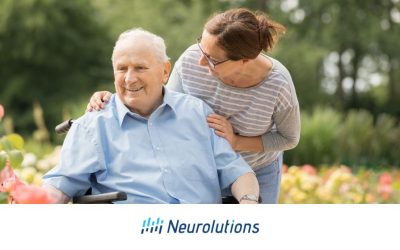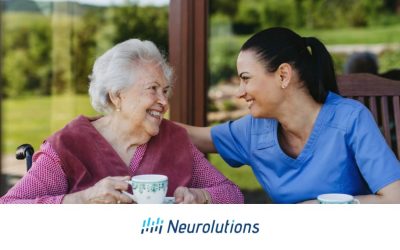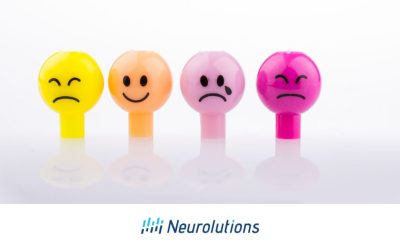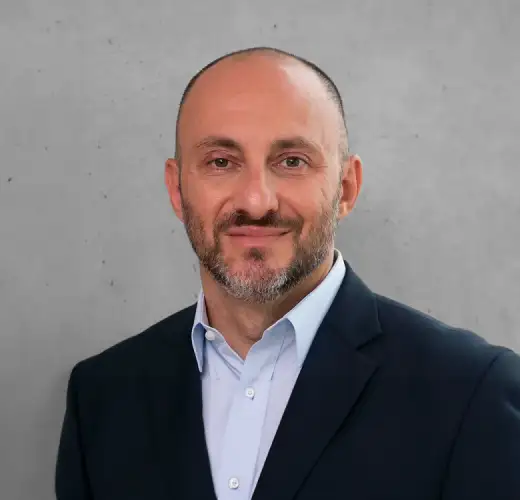What is Learned Nonuse?
After a stroke, many people experience weakness or paralysis on one side of the body. This makes it hard to use an arm, hand, or leg for everyday tasks like eating, bathing, or walking. Because of this, stroke survivors may begin relying only on their stronger side. Over time, this can lead to learned nonuse, which means the weaker side is used very little or not at all. The brain starts to favor the unimpaired side, which can make returning to rehabilitation more difficult in the future.
Learned nonuse was first found in studies on monkeys, but today it is getting more attention for how it affects people with brain and spinal cord injuries, including stroke.1
The Mechanism Behind Learned Nonuse
The brain is made up of neurons that send “messages” to the limbs. After a stroke, the neurons that control movement can be damaged. This makes it harder for the brain to send signals to the body. Because survivors often use their stronger side, they may forget that the weaker side is still part of their body during daily tasks.2 This lack of use creates a cycle where the brain stops sending signals to the weak or paralyzed limb.3
The following are four key factors that cause learned nonuse:
- Initial paralysis or weakness: After a stroke, the affected limb is often weak or paralyzed, which makes it hard to use.
- Lack of practice: If the limb is not used often in therapy or daily life, its ability to work gets worse.
- Compensation: Many stroke survivors rely on their stronger side to do tasks like eating or walking, while ignoring the weaker side.
- The cycle: This pattern of not using the limb slows brain healing and makes it harder to regain movement and motor skills.
Causes of Learned Nonuse
Even with occupational or physical therapy (OT and/or PT) shortly after the stroke, paralysis or weakness of limb can lead to nonuse.
Initial Post-Stroke Period
After a stroke, many survivors have serious weakness or paralysis on one side of the body. In the early recovery stage, even with occupational or physical therapy (OT and/or PT), it can be hard to use the affected limb.
Survivors often feel frustrated when daily tasks are difficult. They may skip exercises outside of therapy. If it feels easier to bathe or cook with the stronger hand, they may stop trying to use the weaker one.
Thinking and memory problems are also common right after a stroke, which can make recovery harder. Survivors may have:4
- Short-term memory loss
- Difficulty focusing or paying attention
- Increased feelings of depression or anxiety
- Chronic fatigue

These problems can drain motivation, and make it harder for survivors to take part in exercises or remember to use the affected limb.
Neurological Factors
When a stroke happens, it can damage connections in the brain. These changes affect not only the injured area but also other parts of the brain. This makes recovery harder for the rest of the body.5 Still, the brain has an amazing ability called neuroplasticity. This means it can form new connections and adapt. Neuroplasticity helps the brain heal after injury and regain lost motor skills during therapy.
Consequences of Learned Nonuse
There are physical, functional, and mental effects of learned nonuse.
Physical Implications:
The main result of learned nonuse is the inability to use the affected limb well. This can lead to physical problems such as muscle atrophy, joint stiffness and loss of joint movement, and a reduced range of motion and strength.
Over time, nonuse can lead to a condition called contracture in which the elastic parts of the human body lose their ability to move. This can cause severe deformities, such as a claw toe. This makes it difficult, if not impossible, to use the affected limb. Contractures can also cause chronic pain.
Functional Limitations:
When a limb is not in use, stroke survivors may find it harder to do daily activities and hobbies they enjoyed before. This loss of function can lead to less personal independence and a lower overall quality of life. Relying on one hand instead of two can also increase the risk of accidents, such as dropping a plate of food or utensils while cooking.
Breaking the Cycle of Learned Nonuse
The cycle of learned nonuse can stop through therapy and caregiver support.
For stroke survivors, breaking the cycle of learned nonuse is important to prevent additional negative impacts on daily functioning. Taking part in a rehabilitation program that includes OT and/or PT as soon as possible after a stroke is crucial for recovery.
Importance of Early Intervention:
Stroke patients in the hospital who join therapy, even with one-sided paralysis, have a better chance of regaining muscle and joint movement. Recovery works best when exercises are done often (mass practice), mimic real-life tasks (functional activities), and feel personally meaningful (salient activities). The following therapy exercises may be used:
- Passive exercise: The therapist gently moves the patient’s body to keep joints and muscles flexible.
- Active-assisted exercise: The survivor moves with help, such as pressing their hand against the therapist’s hand.
- Active exercise: The survivor moves on their own, like lifting an arm overhead and holding it for 10 seconds.
- Functional activity practice: The survivor practices everyday actions, such as reaching for a water bottle, brushing their hair, or standing up from a chair.
Doing these exercises many times a day helps “retrain the brain.” When the activities are connected to things that matter—like holding a grandchild, cooking, or writing—they not only build strength and movement, but also increase motivation and independence.
Rehabilitation Techniques:
The following are rehabilitation approaches for learned nonuse:
- Constraint-Induced Movement Therapy (CIMT) – Helps people use their weak hand by doing tasks like placing pegs on a board or placing balls in a bottle. They often cover the non-effected hand with a mitten to prevent its use.6
- Lower Extremity CIMT (LE-CIMT) – Similar to CIMT but for the lower limbs. Activities can include marching to a beat or straightening the weaker leg while sitting.7
- Reinforcement-Induced Movement Therapy (RIMT) – An alternative to CIMT.8
- Bilateral Arm Training (BAT)9
Taking part in task-specific activities is also important. For example, loading light blankets into a washing machine can motivate stroke survivors to use their affected limb and see its value in daily tasks.

Challenges for Occupational and Physical Therapists to Learned Nonuse in Stroke Survivors
Despite taking part in therapy, many stroke survivors struggle to use their affected limb in daily activities at home. They may favor the non-affected limb and find ways to compensate. Some people, especially those with longer periods of nonuse, might resist doing exercises on the non-used limb altogether.
To fight these challenges, it is vital that therapy strategies aimed at addressing learned nonuse are practiced both at home and during rehabilitation sessions.
The Role of Caregivers and Support Systems:
Care partners*, whether family members, friends, or paid professionals, play a vital role in supporting stroke survivors after they leave the hospital. Their encouragement and involvement can greatly impact recovery, especially in helping them take part in prescribed therapy sessions and exercises and helping prevent learned nonuse. The following are a few key ways that care partners help prevent learned nonuse:
 |
|
- Encourage Independence: Allow the stroke survivor to do daily activities such as self-feeding and self-dressing as much as possible. Even if it would be easier and faster to take on the task, encouraging them to try helps them re-learn motor skills and practice decision-making and problem-solving.
- Motivate Engagement in Therapy: Help keep the stroke survivor stay motivated to take part in OT and/or PT, including prescribed exercises at home. Taking part in these exercises can halt learned nonuse and encourage movement of affected limbs.
- Foster a Positive Outlook: Stay positive during the recovery process and help the stroke survivor focus on their accomplishments, no matter how small. Highlighting progress can fight feelings of hopelessness.
- Address Mental Health Needs: If the stroke survivor shows signs of depression or anxiety, especially if the depressed or anxious mood gets worse, help them in seeking mental health support. Addressing these feelings early on is crucial for recovery and thinking functioning.
Conclusion
Learned nonuse is a common long term result for many stroke survivors who have experienced paralysis or weakness on one side of the body. Survivors often favor their stronger side, which over time creates a cycle of disuse that weakens muscles, stiffens joints, and limits independence. This cycle can also affect confidence, motivation, and thinking skills, making recovery feel even harder.
However, neuroplasticity, early and consistent therapy, and practicing task-specific actions helps retrain movement and restore function. Care partners can encourage independence, support therapy at home, and foster a positive outlook to help survivors stay motivated and engaged.
©2025 Kandu, Inc. All Rights Reserved. | 8090.934.V3.E
References:
- Griffith J. (2016). Learned Non-use. In: Kreutzer J, et al. (Editors). Encyclopedia of Clinical Neuropsychology. Springer, Cham: Edinburgh, Scotland, UK. Webpage: [https://link.springer.com/referenceworkentry/10.1007/978-3-319-56782-2_9019-1].
- Otaki R, Oouchida Y, Aizu N, et al. (2022). Relationship Between Body-Specific Attention to a Paretic Limb and Real-World Arm Use in Stroke Patients: A Longitudinal Study. Frontiers in Systems Neuroscience 15: 806257. Webpage: [https://www.frontiersin.org/journals/systems-neuroscience/articles/10.3389/fnsys.2021.806257/full].
- Levine, Peter. (2018). Stronger after Stroke: Your Roadmap to Recovery; Third Edition. Springer Publishing Co.: New York, NY. Webpage: [https://www.springerpub.com/stronger-after-stroke-9780826124135.html].
- Elendu C, Amaechi DC, Elendu TC, et al. (2023). Stroke and cognitive impairment: Understanding the connection and managing symptoms. Annals of Medicine and Surgery (London) 85(12): 6057-6066. Webpage: [https://www.ncbi.nlm.nih.gov/pmc/articles/PMC10718363/#:~:text=Cognitive%20impairment%20is%20a%20common%20consequence%20of%20stroke%2C%20affecting%20many,70%25%20of%20stroke%20survivors4].
- Young GB. (2014). Encyclopedia of the Neurological Sciences; Second Edition. Webpage: [https://www.sciencedirect.com/topics/medicine-and-dentistry/diaschisis#:~:text=Diaschisis%20is%20a%20Greek%20word,site%20of%20injury%20or%20insult].
- Kwakkel G, Veerbeek JM, van Wegen EE, et al. (2015). Constraint-induced movement therapy after stroke. Lancet Neurology 14(2): 224-34. Webpage: [https://www.ncbi.nlm.nih.gov/pmc/articles/PMC4361809/]
- Marklund I, Sefastsson A, Fure B, et al. (2023). Lower-extremity constraint-induced movement therapy improved motor function, mobility, and walking after stroke. European Journal of Physical and Rehabilitative Medicine 59(2): 136-144. Webpage: [https://www.ncbi.nlm.nih.gov/pmc/articles/PMC10171361/]
- Ballester BR, Maier M, San Segundo Mozo RM, et al. (2016). Counteracting learned non-use in chronic stroke patients with reinforcement-induced movement therapy. Journal of NeuroEngineering and Rehabilitation 13:74 Webpage: [https://jneuroengrehab.biomedcentral.com/articles/10.1186/s12984-016-0178-x#citeas]
- Shim S, and Jung J. (2015). Effects of bilateral training on motor function, amount of activity and activity intensity measured with an accelerometer of patients with stroke. Journal of Physical Therapy Science 27(3): 751-754. Webpage: [https://www.ncbi.nlm.nih.gov/pmc/articles/PMC4395707/]





